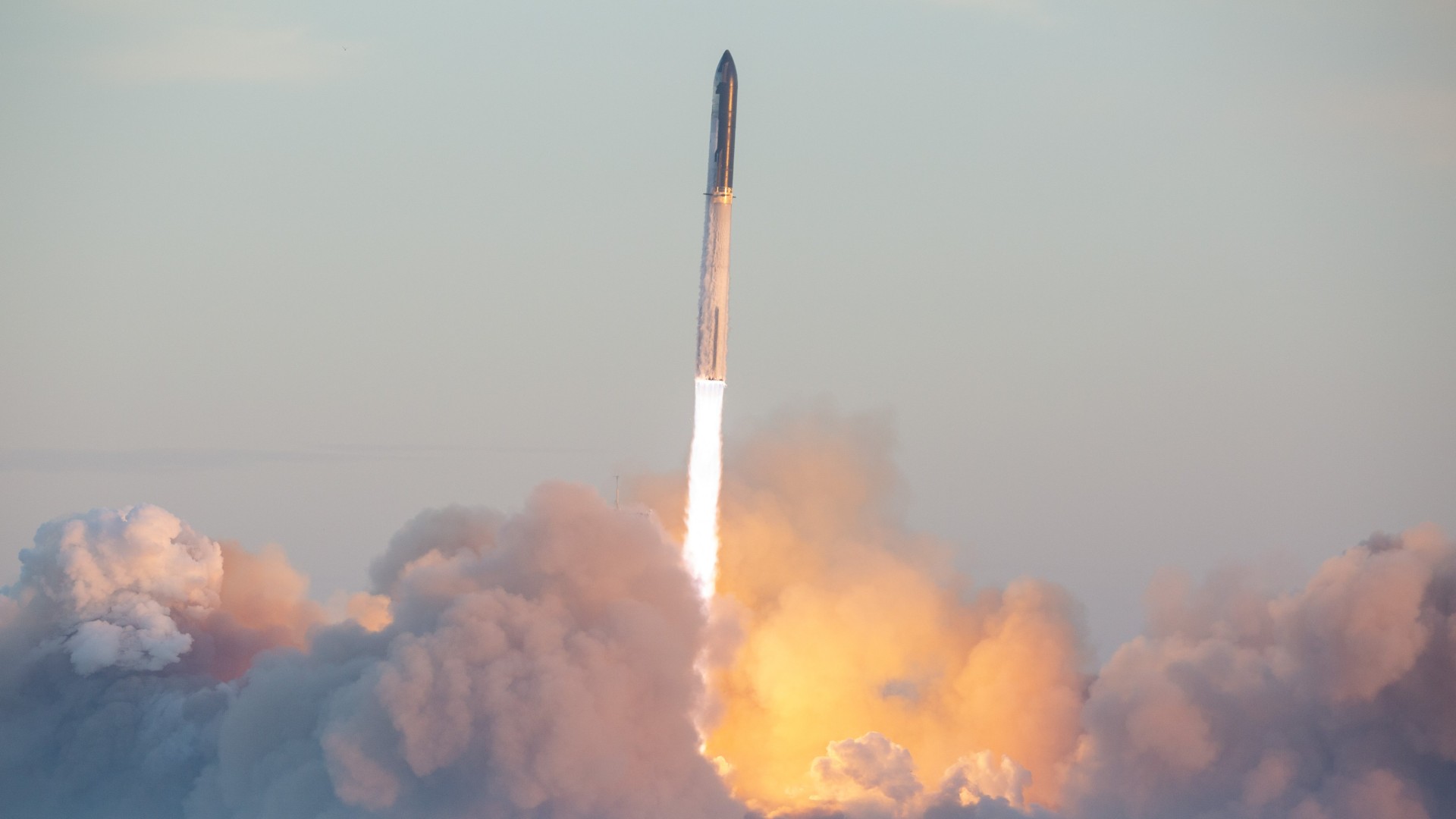NASA chief congratulates SpaceX on Starship's explosive 2nd launch test
SpaceX's Starship megarocket didn't ace its second-ever test flight Saturday (Nov. 18), but it performed well enough to draw praise from some pretty important people.
Starship lifted off this morning from SpaceX's Starbase site in South Texas, on a test mission that aimed to send its 165-foot-tall (50 meters) upper stage most of the way around the world.
That didn't happen; the upper stage exploded about 8 minutes into flight. But Starship notched a number of important milestones leading up to that point, as NASA Administrator Bill Nelson noted.
"Congrats to the teams who made progress on today's flight test. Spaceflight is a bold adventure demanding a can-do spirit and daring innovation. Today's test is an opportunity to learn — then fly again. Together @NASA and @SpaceX will return humanity to the moon, Mars & beyond," Nelson wrote in a post on X this morning.
Related: SpaceX Starship launches on 2nd test flight, but explodes
Photos: See stunning images and video of Starship's 2nd launch
As that post suggests, NASA has an interest in Starship's success.
The space agency chose Starship as the first crewed lander for its Artemis program, which aims to establish a sustainable human presence on and around the moon by the end of the 2020s.
Breaking space news, the latest updates on rocket launches, skywatching events and more!
If all goes according to plan, Starship will deliver NASA astronauts to the lunar surface for the first time on Artemis 3, which is targeted for late 2025.
A Starship lunar landing is still a long way off, but the vehicle made some strides toward that exciting future on today's flight. For example, all 33 of the Raptor engines on Starship's Super Heavy first stage ignited, and the booster separated from the Starship upper stage as planned, about two minutes and 40 seconds after liftoff -- though the booster also exploded shortly after separation.
Related: 8 ways that SpaceX has transformed spaceflight
And Starship reached space, attaining a maximum altitude of 91 miles (148 kilometers), according to the telemetry SpaceX provided during today's launch webcast. The boundary of space lies at 50 miles (80 km) or 62 miles (100 km), depending on whom you ask.
All of those numbers are improvements over Starship's debut flight, which lifted off from Starbase on April 20. A handful of Super Heavy's Raptors conked out during that mission. Even more problematically, the two stages failed to separate, so SpaceX commanded the vehicle's destruction, which occurred four minutes after liftoff. Starship reached a maximum altitude that day of 24 miles (39 km).
Related: Incredible photos of SpaceX's 1st Starship launch
Nelson wasn't the only one to celebrate the progress Starship made today. For example, former Canadian astronaut Chris Hadfield contributed kind words as well.
"A very successful 2nd test flight of a complex new vehicle, with huge progress and learning. Onwards ad astra, @SpaceX!" Hadfield said in a post on X today.
Billionaire tech entrepreneur Jared Isaacman also offered praise via X: "Congrats @elonmusk & @SpaceX!! Just incredible."
Isaacman has even more skin in the Starship game than Nelson does. Isaacman booked a private SpaceX mission to Earth orbit called Inspiration4, which flew in September 2021 using the company's Falcon 9 rocket and Dragon capsule. Isaacman has also committed to flying on Starship, on the third mission of the ambitious Polaris Program, which he is organizing and funding.
The Polaris flight will be the first-ever crewed Starship mission, if all goes according to plan.

Michael Wall is a Senior Space Writer with Space.com and joined the team in 2010. He primarily covers exoplanets, spaceflight and military space, but has been known to dabble in the space art beat. His book about the search for alien life, "Out There," was published on Nov. 13, 2018. Before becoming a science writer, Michael worked as a herpetologist and wildlife biologist. He has a Ph.D. in evolutionary biology from the University of Sydney, Australia, a bachelor's degree from the University of Arizona, and a graduate certificate in science writing from the University of California, Santa Cruz. To find out what his latest project is, you can follow Michael on Twitter.


